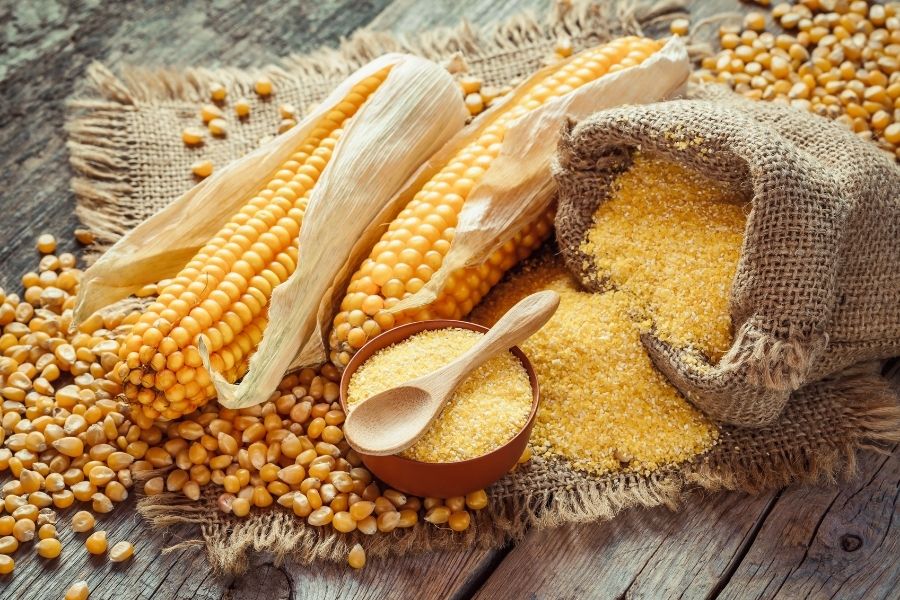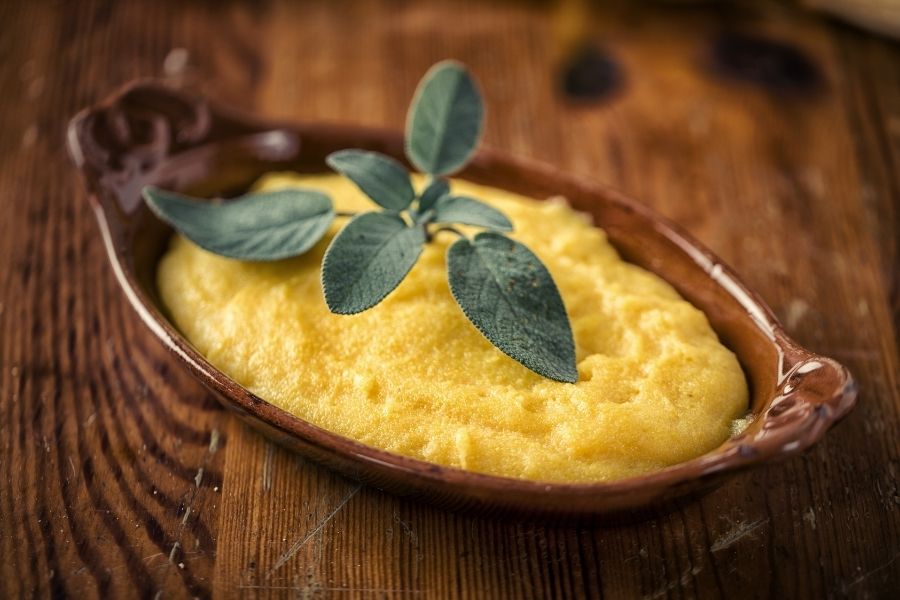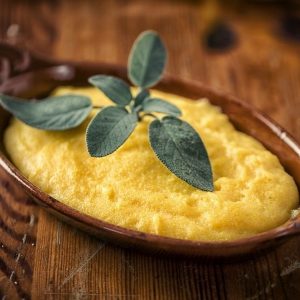Exclusive! I’m excited to share this Sofkee recipe from Miami Vegan.
Celebrate Indigenous People’s Day by enjoying corn, one of the Magic Eight crops Indigenous Americans gifted to the world. (The other seven, btw, are tomatoes, chiles, squash, beans, cacao, vanilla and potatoes).

You may know it as polenta; you may know it as grits. If you’re Romanian, you may know it as mamaliga. We’re talking cornmeal porridge. Indigenous Americans, including Florida’s Seminole and Miccosukee tribes, know it as sofkee, and they should get dibs on the name. They were growing, drying and grinding corn (aka maize) millennia before Columbus even got here.
For a simple, comforting dish, sofkee is swathed in elaborate ritual. Corn itself is sacred to the Indigenous People and a symbol of fertility. Florida’s Miccosukee tribe traditionally served a communal pot of sofkee at gatherings. Guests were served first, each ladling up the porridge with a large spoon carved from pond apple, a South Florida hardwood. One by one, each person would eat their fill, then passed the spoon to the next person to dip and sip.

Sofkee’s been around the block, been around the world, but that commercial tube of premade polenta is where something got lost in translation. Sofkee from scratch tastes a world better. And cheer up, my culinary mentor Paula Wolfert has shared a genius hack to make flawless sofkee every time, no standing and stirring over an open fire or hot stove, no splatters on your stovetop or you — ouch. Sofkee has a million riffs, and almost as many names, but it’s always a pot of comfort and goodness that serves everyone.
To serve: This is sofkee at its most elemental. I recommend cooking it this way, then enriching it in any way you like. Some suggestions:
- Make it richer with a pat or two of vegan butter or drizzle on some cashew cream
- Make it cheesier by adding nutritional yeast and/or grated vegan cheese
- Add a fistful of your favorite herbs, chopped tomato and/or chopped jalapeno
- Let it serve as a yummy bed for grilled or roasted vegetables
- Pair with Sukuma Wiki, Cuban black beans or mushroom etouffée.
- Splash with hot sauce
- Enjoy the sweeter side of sofkee — top with fresh fruit, cinnamon, chopped nuts, a drizzle of cashew cream and/or maple syrup or molasses
To keep: Sofkee keeps covered and refrigerated for several days, during which time it tends to thicken. If it’s thickened too much for you, thin to your desired consistency with water, vegetable broth or your favorite unsweetened plant-based milk, then reheat gently on the stove, stirring over medium heat, or bake covered, in a 300 degree oven for about 20 minutes, or until heated through. Give it a stir and you’re good to go.

Sofkee
Ingredients
- 2 tablespoons olive oil plus more for finishing.
- 1 cup medium to coarse cornmeal
- 4-5 cups water 4 if you want a firmer, more solid sofkee, 5 if you want it looser and creamier
- sea salt and ground pepper — be generous
Instructions
- Preheat oven to 350 degrees.
- Generously oil a deep ovenproof casserole. Pour in cornmeal and water, add a good pinch of sea salt. You’ll want more when it’s done. Give everything a stir, so it forms a slurry. It will not look pretty. Have heart.
- Place casserole in the oven uncovered and leave it to work its sofkee sorcery for 1 hour.
- Remove from oven and give it a vigorous stir so everything’s smooth and lumpless,
- Season generously with sea salt and fresh ground pepper and more olive oil if desired.
Notes
- Make it richer with a pat or two of vegan butter or drizzle on some cashew cream
- Make it cheesier by adding nutritional yeast and/or grated vegan cheese
- Add a fistful of your favorite herbs, chopped tomato and/or chopped jalapeno
- Let it serve as a yummy bed for grilled or roasted vegetables
- Pair with Sukuma Wiki, Cuban black beans or mushroom etouffée.
- Splash with hot sauce
- Enjoy the sweeter side of sofkee — top with fresh fruit, cinnamon, chopped nuts, a drizzle of cashew cream and/or maple syrup or molasses

You left out the lye.
Hi, Barbara, You’re right in that nixtamalized corn needs to be treated with something caustic, like lye or ash But you can absolutely make this recipe with coarse cornmeal, polenta or grits. Try it and let me know what you think. Thanks!